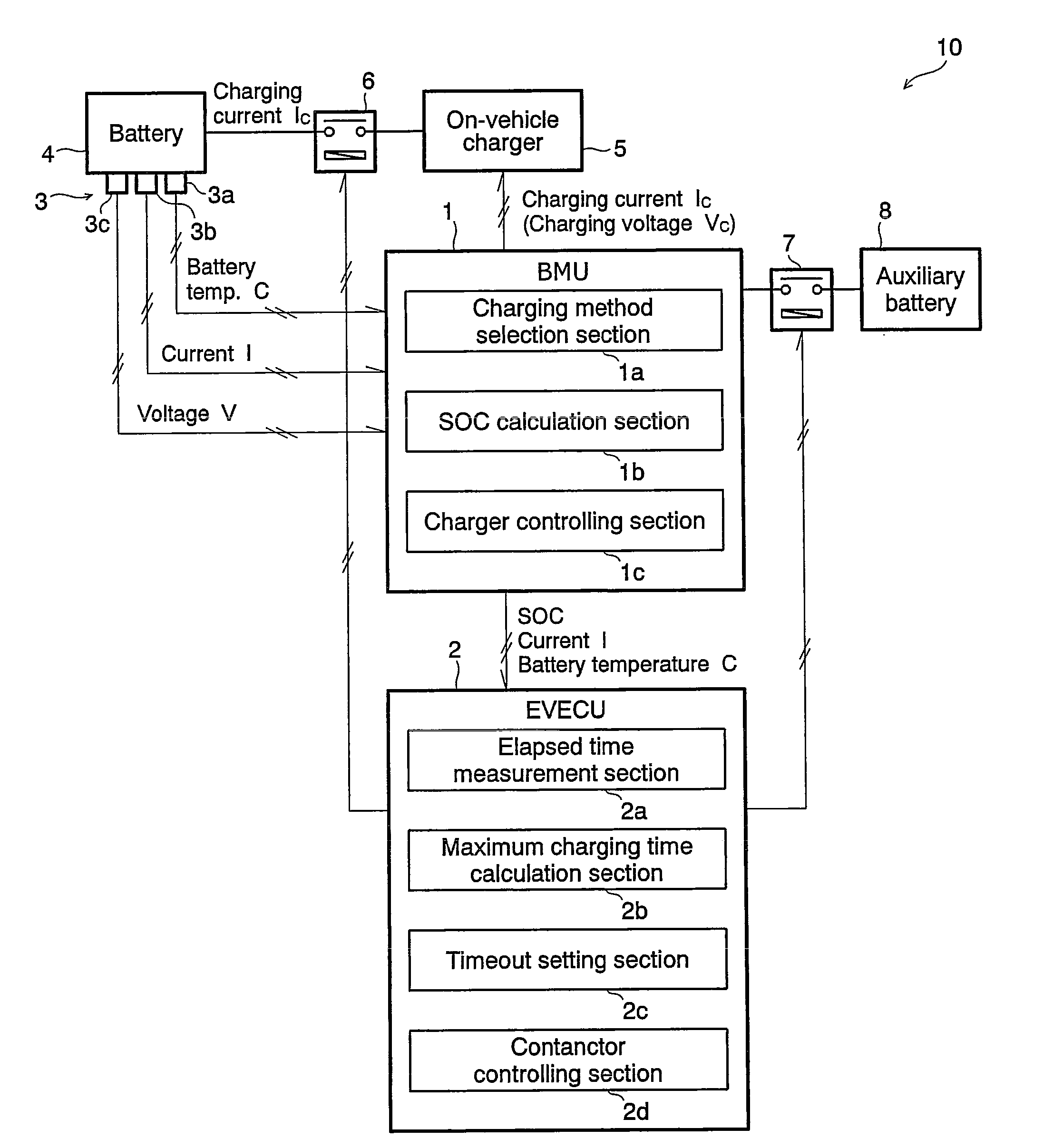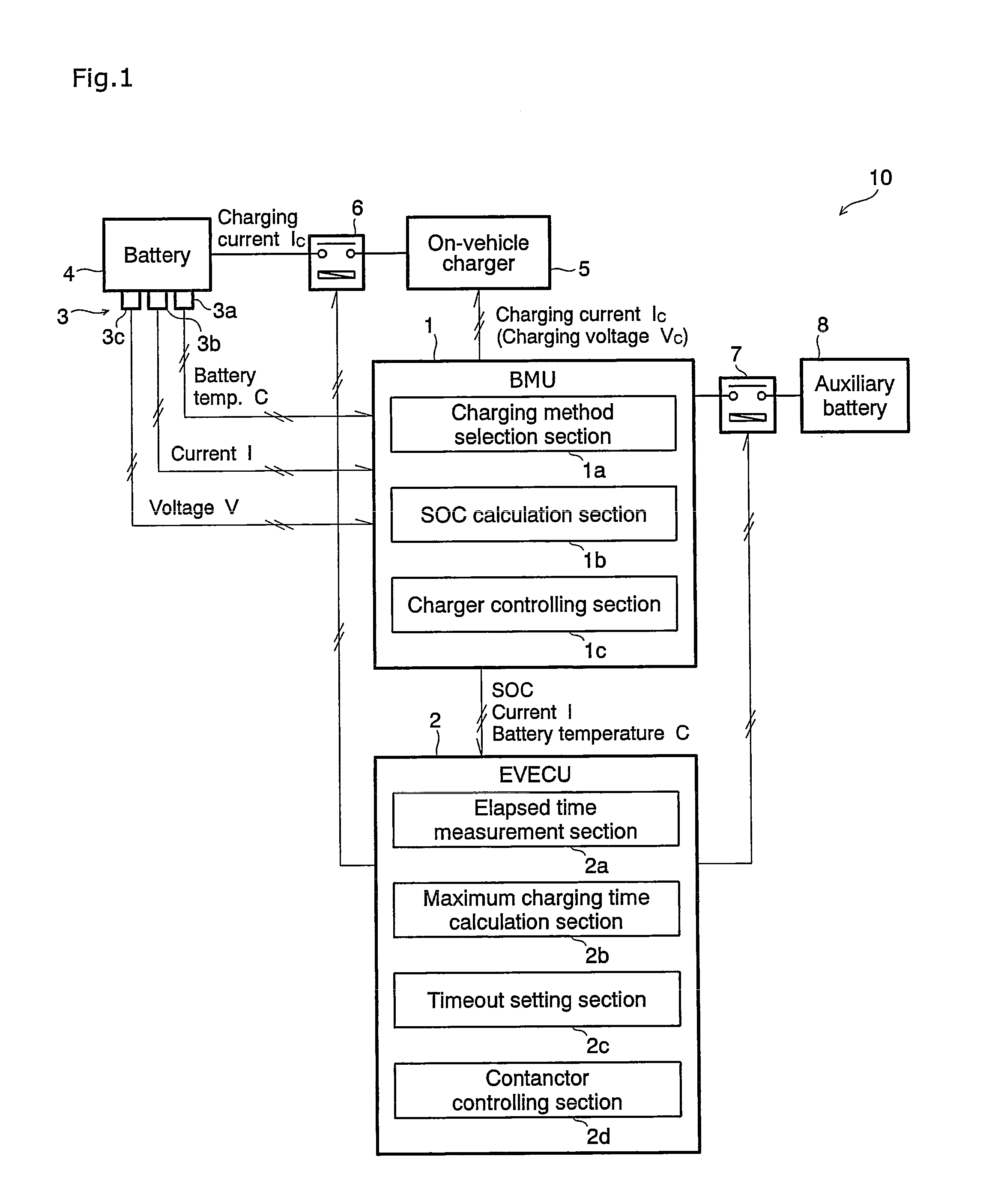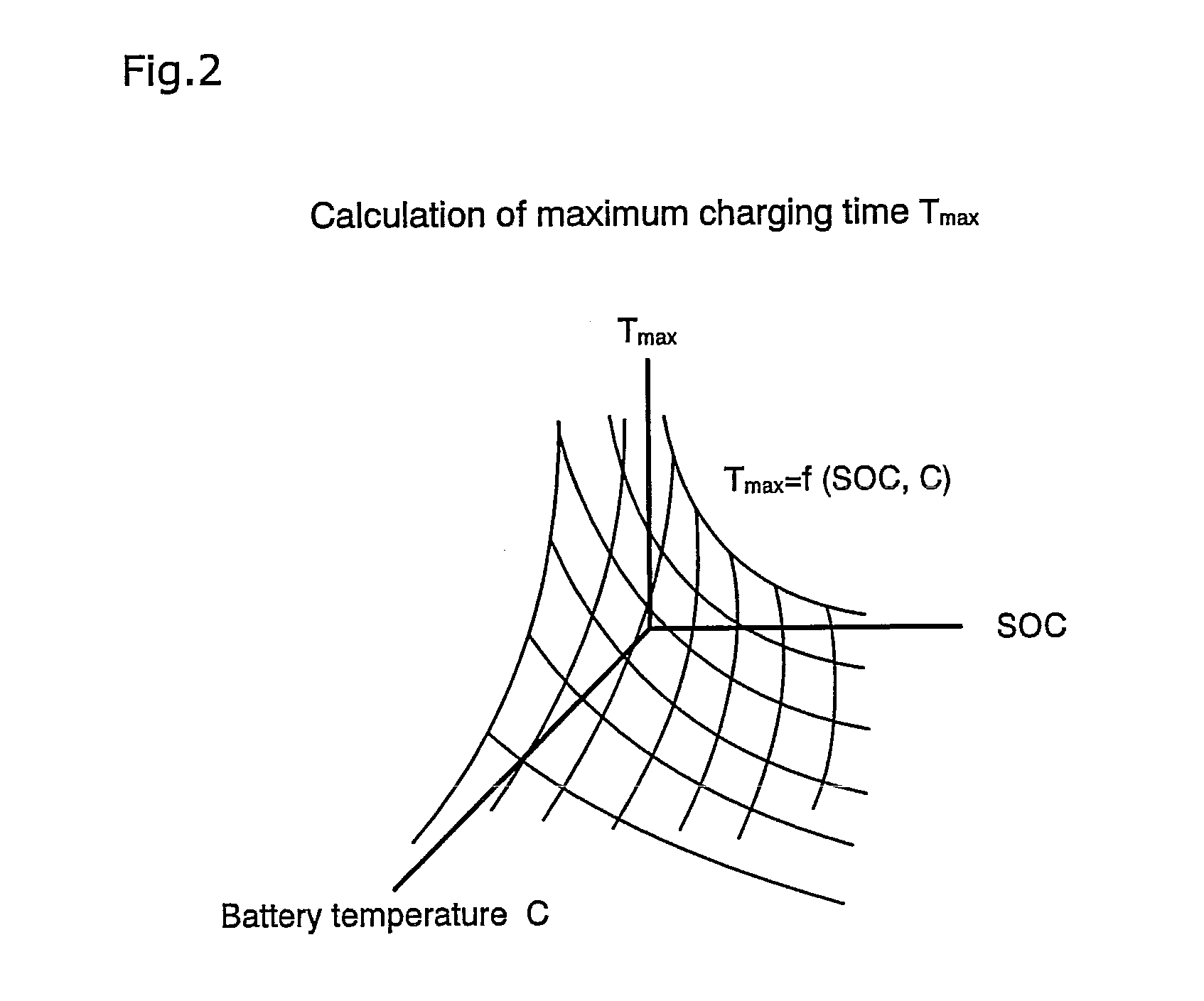Battery controlling apparatus for a vehicle
- Summary
- Abstract
- Description
- Claims
- Application Information
AI Technical Summary
Benefits of technology
Problems solved by technology
Method used
Image
Examples
Embodiment Construction
[0049]In the following, an embodiment of the present invention is described with reference to the drawings. FIGS. 1 to 7 are views illustrating a battery controlling apparatus for a vehicle according to an embodiment of the present invention. FIG. 1 is a block diagram showing a general configuration of the battery controlling apparatus. FIG. 2 is a graph illustrating a relationship of maximum charging time to a battery temperature and an SOC in the battery controlling apparatus. FIG. 3 is a graph illustrating a relationship between offset time and current in the battery controlling apparatus. FIG. 4 is a graph illustrating contents of control by the battery controlling apparatus. FIG. 5 is a graph illustrating aged deterioration of the current and the voltage in the charge control by the battery controlling apparatus. FIGS. 6 and 7 are flow charts showing a controlling procedure by the battery controlling apparatus.
[0050][General Configuration]
[0051]The battery controlling apparatus...
PUM
 Login to View More
Login to View More Abstract
Description
Claims
Application Information
 Login to View More
Login to View More - R&D
- Intellectual Property
- Life Sciences
- Materials
- Tech Scout
- Unparalleled Data Quality
- Higher Quality Content
- 60% Fewer Hallucinations
Browse by: Latest US Patents, China's latest patents, Technical Efficacy Thesaurus, Application Domain, Technology Topic, Popular Technical Reports.
© 2025 PatSnap. All rights reserved.Legal|Privacy policy|Modern Slavery Act Transparency Statement|Sitemap|About US| Contact US: help@patsnap.com



